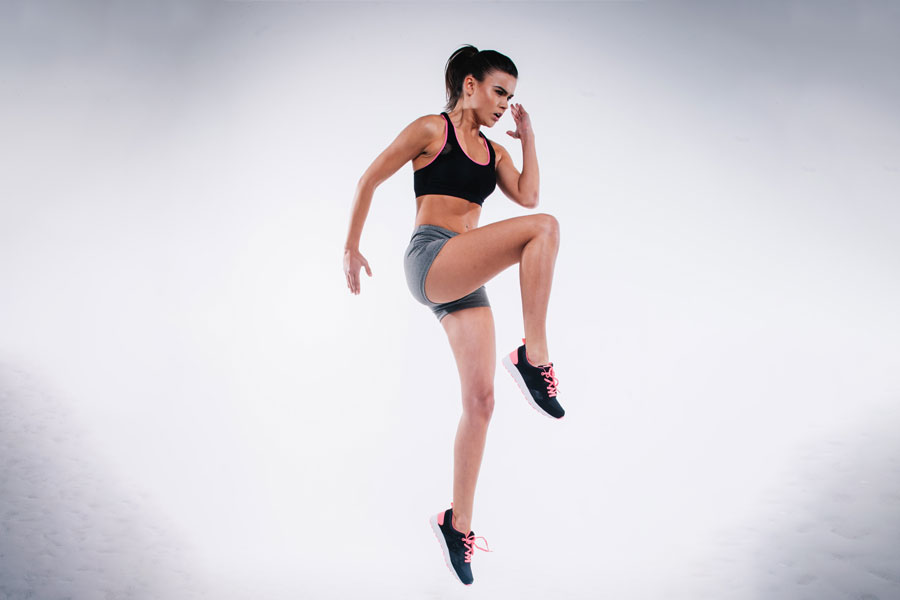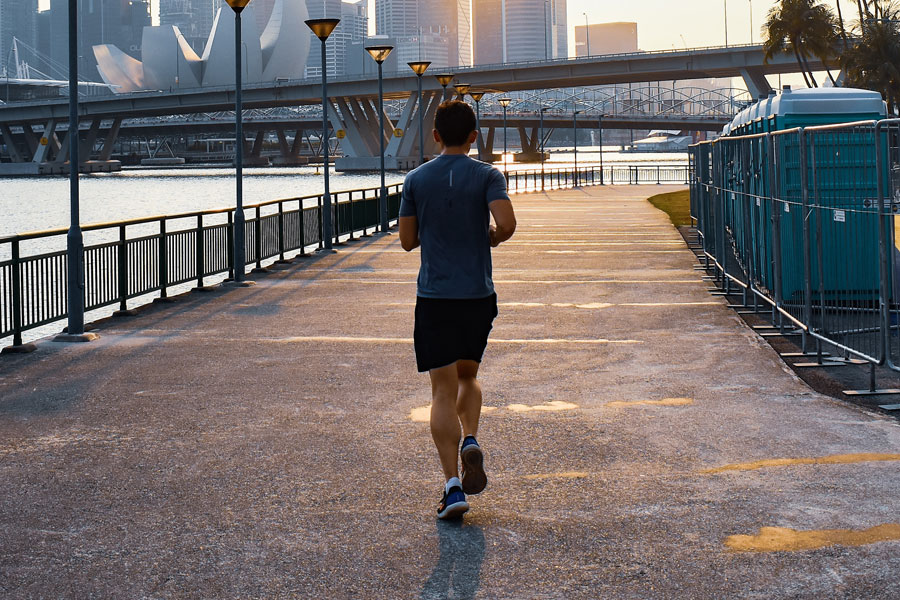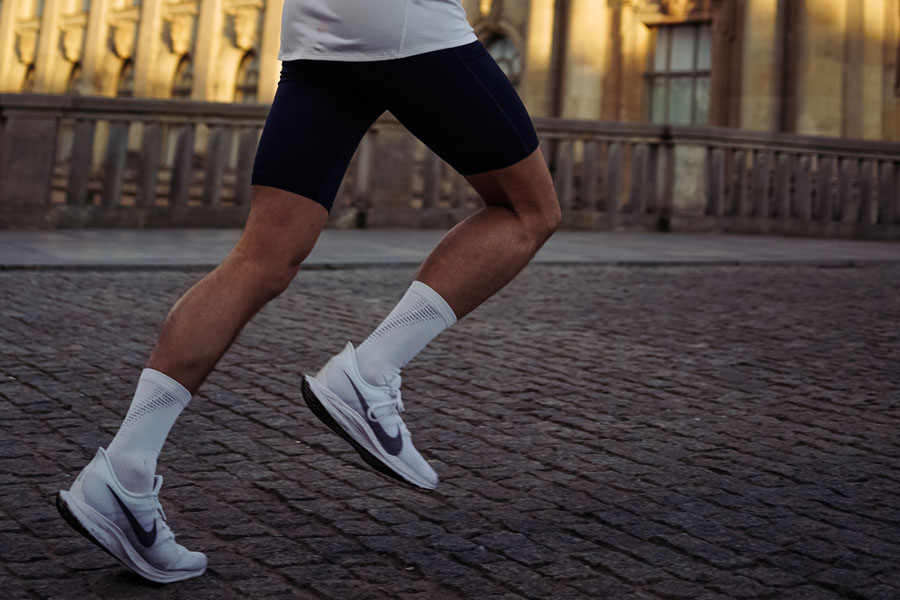
If you wish to feel the ultimate excitement of a healthy new lifestyle, you better going ahead with a proper exercise program. Exercising is very good for all to maintain the health and beauty of the body. But if you are getting into the workout zone, you are sidelined with achy feet, corns, calluses, blisters, maybe even an injury. That can compromise your fitness goals and make even worse as you feel like you are standing on a bed of nails. That is why you should have to balance your feet while exercising. Taking care of your feet is pretty important.
Podiatrist Dominic Catanese, DPM, director of the Podiatry Service at Montefiore Medical Center in New York, stated that “small foot problems would probably do not make much difference at other times. They can also suddenly become worst and make a big deal when you begin to put significant stress on your feet. This will happen as you are starting your exercises and when you do exercises in a wrong posture.
Insignificant foot pains can turn into major medical problems if you do not pay much attention as you have diabetes. Feet have the potential of getting used to new stresses, allowing the skin to grow thicker and more challenging, so fewer problems occur over time. You can take several things to reduce the risk of common workout-related foot problems and keep your feet feeling healthy and happy.
Now:
Here we hope that now you see how much it is important to balance your feet while exercising.
Let’s dive right in:
Some easy balance exercises at home, balance your feet while exercising
Keeping and maintaining your body balance is very important for staying on your feet and preventing falls as you age. The balance ability of humans’ starts to decrease in everyone with aging, and it accelerates faster the older you get. Whoever over the age of 40 should start thinking about adding balance exercises into their regular physical activities in order to maintain good health. Many of these exercises are super easy-to-do at home, and it does not take much time even as any lower-body resistance exercises and most core training double as balance training.
Collapsing can happen at any age. Therefore, it is necessary to reduce that risk as much as possible. Improving your balance, flexibility, especially in your ankles, lower body strength, fitness, and agility are a few of the necessary actions that reduce the risk of collapsing to a huge extent. Of course, you can gain the best results by working on balance exercises daily.
Test Your Balance by own – It is pretty important to balance your feet while exercising!
It is better to test it out before assuming too much as you think you already have an outstanding balance. You can try this by standing on one leg and shut your eyes. Do not try doing this without holding onto something or having something close by that you can grab if you want to. If you feel uncomfortable it is okay to stand steadily on one leg for at least 15 seconds with or without your eyes closed.
Exercises for healthy feet
Your feet not only improve the overall foot health but may also reduce the risk for injury by following daily basis exercising. The best comprehensive foot exercise is, walking. There you can put your foot through its full range of motion. When you walk, walk from the time your heel hits the ground until you lift off with your toes. Walking is the most practical as well as the ideal exercise for your entire body. Of course, walking can improve your cardiovascular health, and this can help your circulation, muscle tone, and even mood.
More addition to the walking exercise, flexibility, and resistance exercises can also help keep your feet healthy.
Flexibility exercises
Exercises that can improve flexibility help you keep your feet limber and reduce the risk of injury. Studies have shown that you can still improve your flexibility even though your feet have grown stiff with age.
Yeah, age is just a number!
Following slow and gentle daily stretches and focusing on one group of muscles at a time are the best tips to gain flexibility.
Resistance exercises
During resistance exercises, your muscles work against a considerable amount of resistance. Weights or exercise bands are a few of the instances for such exercises. Resistance exercises strengthen muscles, which provide better support and protection for the foot ultimately. Exercise bands seem a bit like compression bandages. They come in various colors that correspond to the amount of resistance that they provide.
Foot resistance and flexibility exercises can be built into your daily routine. Most of the exercises can be performed during the workday. To avoid falling and slipping while doing the exercises, you may want to be barefoot and have a chair, desk, or wall nearby that you can use for balance. Do not do foot exercises if they hurt or give you pain. Always be sure to take some time to stretch and strengthen the muscles in your feet before doing any foot exercises. It will help you balance your feet while exercising.
Perhaps your feet will suddenly bear the brunt of all that activity and movement, especially with high-impact sports like aerobics or tennis. But, if you are suffering from arthritis, cardiovascular problems, diabetes, or structural foot problems, first, you should have to consult a foot care specialist.
Why is that?
The above-mentioned clinical conditions affect your ability to exercise to a greater extent. Therefore, you better get medical advice prior to going ahead with an exercise program.
Single-Leg Balance Exercise at home
The easiest and the comfortable balance exercise is to hold onto a table with both hands while standing on one leg. When you feel stable while continuing this posture and exercise in this position, you can try it with less support, as mentioned below. You can try this exercise minimally two to three times a day on alternating feet. Your balance will rapidly improve within a couple of weeks or months as per your level that you have practiced.
Modifications on Single-Leg Balance Exercise
This exercise helps to improve your balance further if you modify it a bit. And also, you can incorporate these more advanced balance techniques as you progress.
- By holding on with only one hand;
- By holding on with just one fingertip;
- When you are very steady on your feet, you can close your eyes and try still without holding on.
- By do not hold on at all, and
It is good to have someone stands close by in any case you ever feel unsteady, though your eyes are closed. You can continue this by switching legs and often repeat, and then can try by both with your eyes open and next with them closed.
What are anytime balance exercises?
Anytime balance exercises can improve your balance and emphasize how young and steady you still are. The best thing is that you can do these exercises almost anytime and as often as you like and as long as you have something sturdy nearby to hold onto if you needed.
- Walk heel-to-toe
You should position your heel just in front of the toes of the opposite foot each time you take a step. As your heel and toes should touch or come close, you may need a good start first, like going along handrails or with a wall next to you.
- Walk backward
You can try walking backward along a wall or a kitchen counter without looking back. You can get the help of the wall as you want to steady yourself infrequently.
- Try standing on a cushion or other unstable surface
Use cushions or pillows that have various firmnesses. Next, stand on them with your legs alternately together and apart.
- Stand with a changed position
You can try standing under different conditions like your head tilted to one side or straight, your mouth talking or silent, with your eyes open or closed, and your hands at your sides or out from your body.
- Grab a towel with your toes
Here you have to place a towel on the floor. Then practice grabbing it with the toes of both of your feet, alternately, while both sitting and standing.
Some More Balance Activities for any time- Balance your feet while exercising
A moment! There are a lot more! We are indeed sure that you are excited to know more about these ‘Any time Balance Activities’. Continue reading!
Single leg balance
Face a wall for support. Then balance on one leg should be for 10-20 seconds. Eyes should be open. Repeat the same movement on the other leg.
Three-way leg swing
This is yet another popular anytime balance activity. Three-way leg swing requires you to follow the below steps.
- Stand on a single foot.
- Keep your hands on your hips.
- Swing the other foot forward direction.
- Repeat ten times.
- swing the other foot sideways
- Repeat ten times.
- Next, swing the other foot backward direction.
- Repeat ten times.
- Finally, return to the middle starting position after holding each outward position for 5 seconds per repetition.
Hope these would steps help you do the three-leg swing in the perfect way!
Balance/Reach
Below are the steps for balance/reach.
- Stand on both feet.
- And then bend knees and lower body.
- Next, reach across the body with the opposite hand. It can be done single-legged for progression.
Of course, it is not that hard. You can try it yourself.
Forward Lean
By standing on one or both feet, hands-on-hips, bend forward as if to touch the forehead to the wall. Hold 10-15 seconds, and you are done with it!
Toe Raise point and curl
Rock back on heels while standing upright, and this should repeat ten times.
Start with sitting in a chair with your feet flat on the floor. Then you need to keep your toes flat on the ground. Next, raise your heels until only the balls of your feet and toes touch the ground. Then hold for five seconds. Then point your toes so that only the ends of your big and second toes touch the ground. Hold for five seconds. Keep your heel off the ground. Then roll your toes under so that that tops of your toes touch the ground. Hold for five seconds. Repeat each position ten times.
Heel Raise
By standing on both feet, rise on the balls of both feet. Repeat this ten times. This can be done single-legged.
Wear the precise shoe for your workout – Balance your feet while exercising!
Feet provide the foundation to our body and, of course, strong feet mean a strong body. Feet connect to our core and glutes, which means that we get more out of our workouts if we are strong enough from the ground up. And also, “Taking care of your feet means keeping them flexible and strong and wearing the right shoes for your workout”, says Dr. Splichal. “Like any other body part of our body, in order to achieve the optimal performance, we need to care for your feet. The continuous impact that comes with cardio requires the right footwear that fits. Wearing uncomfortable shoes can lead to a multiples problem, including plantar fasciitis, heel spurs, arch spasms, and tendonitis.”
By choosing a proper shoe for a specific workout, you can avoid injury and protect your feet. If you take off your workouts carefully, then your athletic footwear and socks should reflect that. Since there are numerous options available today, it is not easy to pick the ideal footwear.
But it is better to try not to make the shoe a multi-tasking shoe. As you might already know, there are many shoe types that are specific for certain activities. Simply, running shoes are pretty different from hiking shoes. Further, even running shoes come in several varieties such as beginners’ running shoes, cushioned-shoes, and long-distance running shoes, from several brands and styles. The best shoes for working out are those that allow you for optimal movements. They can offer footwear with minimal cushion and support. Generally, all foot types can tolerate working out with minimal shoes, and they support proper foot flexibility and strengthening as well.
Know your foot size and type!
Make sure to visit a running shoe store that offers free measuring. This helps you to get familiar with your foot size. With time, our feet change and tend to get wider. Getting your feet measured is vital and the easiest way to have an idea of your actual foot size.
You should also be able to figure out whether or not you have a flat foot versus a high arch. This will help you to get the support you need for your activity and pick the right shoe with an appropriate mix of cushioning for stability.
Rest your feet in between high-impact exercises!
The best way to reduce foot-related injury in the first place is to be mindful of how often you put what excessive impact forces to your feet. Also balancing that with foot recovery and foot-specific exercises is important. It is essential to switch up everyone’s cardio workouts with low-impact exercises like yoga and remember to listen to your bodies. You should also know your limits as your feet start to hurt or pull back for a change or a modification. The more you work out with an injured foot, the longer it will take to heal. Meanwhile, if you continue exercising in such a condition, then it will surely delay the healing process as well. Moreover, it can make the injury worse. And why not? It will delay you from reaching your fitness goals as well.
Always keep your feet dry and clean during exercise!
Although you do your best to keep feet safe, you should also keep your feet clean. This will avoid bacterial viruses and fungus that can lead to athlete’s foot or direct old stinky feet syndrome. It is essential to wear flip-flops or a waterproof sandal when you shower or rinse off after a public locker room workout. Do not forget to dry the feet thoroughly after having a shower. Make sure to use a clean towel, and also you should consider using an antifungal foot powder if you frequently shower at the public gym. Be aware to check your feet for cuts, spots, blisters, or bruises on a regular basis, and it is essential to keep your toenails cut. And it is better to wear clean socks daily. Further, if you sweat quite a bit during your workouts look for moisture-wicking socks.
Do not ignore aches and pains!
If your feet get hurt during cardio, of course there are two key reasons behind that.
Here’s the real story:
If you wear the wrong shoe, of course, that is one of the key reasons. May be you are new to workouts.
You might come across a certain amount of aches and pains that will become worsen over time if not addressed properly. That is because cardio workouts involve many impacts and pounding placed on the feet, and without the proper support. In such a situation, you should have to stop the workout. You would think that sticking it out makes you stronger. But that is pretty much harmful. Not only will the pain that arises in regular beats, but also the permenant serious issues that it my cause.
Why do foot exercises matter to balance your feet while exercising?
Keeping your feet healthy, strong, and flexible can help you in various ways. Some of them have been discussed below.
- Reduce foot and ankle pain
- Reduce muscle soreness
- Improve your overall foot health
- Keep you active
So, remember! Keep your feet healthy and strong, to make your feet balance while exercising, and to experience these amazing benefits.
Wrapping up
Exercises that help improve range of motion and help limber up your feet, can reduce your chance of getting hurt and gaining pain in muscles. Slow and gentle stretches can improve your limb flexibility. Strength exercises can enhance your muscles to provide better support and protection for your foot as a whole. It is better to do these gentle stretching and strengthening exercises three days per week or as often as every day to develop your range of motion and strength for lifelong foot health and vitality.
And something important! Even research featured by the US National Library of Medicine National Institutes of Health, reveals that fitness activities can cause several injuries. Moreover, it also concludes that the facilities should implement risk management strategies to reduce such risk of injuries. So, this simply proves how important it is to balance your feet while exercising, and when immersing yourself in fitness activities. So, keep it in mind, and take care of your feet. Also, make sure to check with your doctor or physical therapist before starting to do any of these exercises if the feet and ankles ache a lot. This is simply a must if you have arthritis or diabetes, or if you have a history of any injuries.
Bottom Line
If you do these foot stretches and strength exercises continuously, your feet will feel good and comfortable. The stiffness and aches will reduce. These exercises can relieve your heel and arch pain, and prevent hammertoes and stop toe cramps. Before going ahead with your foot exercises, you should warm up a little bit. There you can get enhanced blood flow before stretching your tendons, ligaments, and muscles. The majority of the exercises and stretches are easy to do at home, and they are not painful. So be gentle with yourself. Finally, we firmly believe that this read gave you all a great idea of how important it is to balance your feet while exercising.


